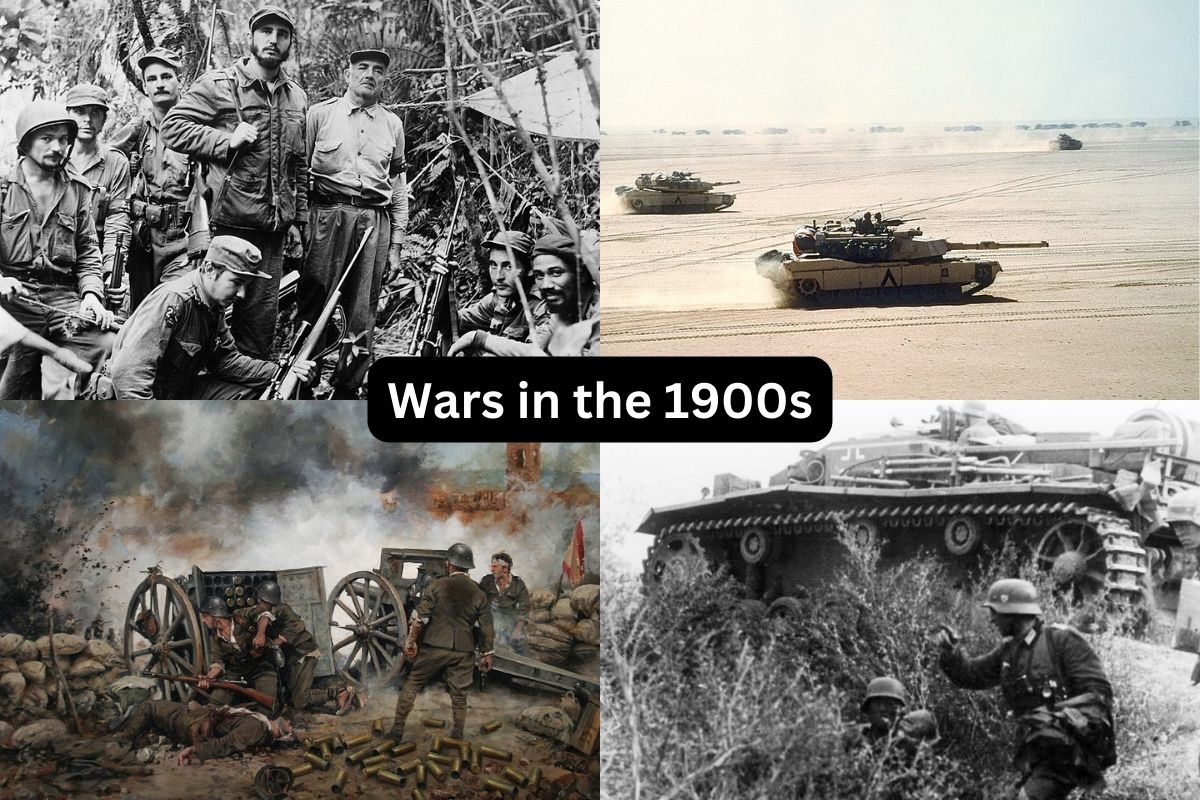The 20th century, also known as the 1900s, was a tumultuous period marked by numerous conflicts and wars that reshaped the political, social, and economic landscapes of countries around the world.
The century witnessed the emergence of new military technologies, ideological conflicts, decolonization movements, and the clash of major world powers.
From the devastating World Wars to regional conflicts and struggles for independence, the wars of the 1900s had profound and lasting impacts on global history.
The wars of the 1900s reflect a century marked by political upheavals, territorial disputes, struggles for independence, and ideological clashes.
The legacy of these conflicts continues to shape the modern world, highlighting the importance of studying and understanding the complexities of war and its long-term consequences.
List of Wars in the 1900s
| War | Years | Description |
|---|---|---|
| Second Boer War | 1899-1902 | Conflict between British Empire and Boer republics in Africa. |
| Russo-Japanese War | 1904-1905 | War between Russia and Japan over territorial disputes. |
| World War I | 1914-1918 | Global war involving major world powers and their alliances. |
| Russian Civil War | 1918-1922 | Internal conflict in Russia following the Russian Revolution. |
| Turkish War of Independence | 1919-1922 | Struggle by Turks against foreign occupation during post-WWI period. |
| Irish War of Independence | 1919-1921 | Irish campaign for independence from British rule. |
| Greco-Turkish War | 1919-1922 | Conflict between Greece and Turkey over territorial disputes. |
| Polish-Soviet War | 1919-1921 | War between Poland and Soviet Russia, emerging from the Russian Civil War. |
| Chinese Civil War | 1927-1949 | Armed conflict between the Chinese Communist Party and the Nationalist Party. |
| Chaco War | 1932-1935 | Conflict between Bolivia and Paraguay over the Gran Chaco region. |
| Second Italo-Ethiopian War | 1935-1936 | Invasion of Ethiopia by Italy, part of Italy’s colonial ambitions. |
| Spanish Civil War | 1936-1939 | Internal conflict in Spain between Republicans and Nationalists. |
| Second Sino-Japanese War | 1937-1945 | War between China and Japan, merging into World War II. |
| World War II | 1939-1945 | Global conflict involving major world powers and multiple theaters. |
| Korean War | 1950-1953 | War between North Korea (supported by China) and South Korea (supported by the UN). |
| First Indochina War | 1946-1954 | Conflict between France and the Viet Minh in French Indochina. |
| Algerian War of Independence | 1954-1962 | Struggle for independence by Algerian nationalists against French colonization. |
| Suez Crisis | 1956 | Military intervention by Israel, UK, and France in response to nationalization of Suez Canal. |
| Cuban Revolution | 1953-1959 | Revolution led by Fidel Castro, resulting in the overthrow of Cuban dictator Batista. |
| Bay of Pigs Invasion | 1961 | Failed US-backed invasion of Cuba by Cuban exiles. |
| Vietnam War | 1955-1975 | Protracted conflict between North and |
| Six-Day War | 1967 | Brief war between Israel and neighboring Arab states. |
| Yom Kippur War | 1973 | Conflict between Israel and a coalition of Arab states. |
| Soviet-Afghan War | 1979-1989 | Soviet military intervention in Afghanistan. |
| Falklands War | 1982 | Conflict between the UK and Argentina over the Falkland Islands. |
| Iran-Iraq War | 1980-1988 | War between Iran and Iraq, rooted in territorial and political disputes. |
| Gulf War | 1990-1991 | International military coalition’s response to Iraq’s invasion of Kuwait. |
| Yugoslav Wars | 1991-2001 | Series of ethnic conflicts and wars in the former Yugoslavia. |
1. Second Boer War (1899-1902)
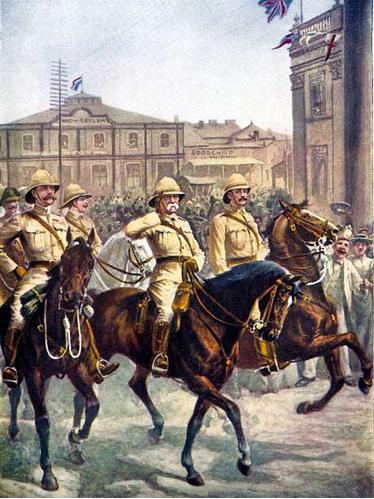
The Second Boer War was fought between the British Empire and two Boer states, the South African Republic (Transvaal) and the Orange Free State.
The conflict arose from tensions over the Empire’s influence in the region and the discovery of gold and diamonds. The Boers initially had success in the early stages of the war, utilizing guerrilla warfare tactics against the British forces.
However, the British eventually gained the upper hand through their superior resources and manpower, and the conflict ended with the Treaty of Vereeniging in 1902. The war resulted in the establishment of the Union of South Africa in 1910.
2. Russo-Japanese War (1904-1905)
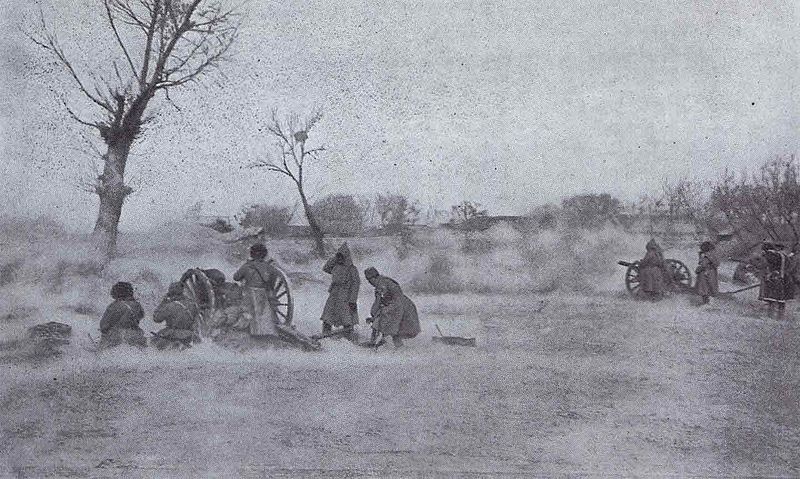
The Russo-Japanese War was fought between the Russian Empire and the Empire of Japan. The conflict emerged from territorial disputes over control of Korea and Manchuria.
Japan, seeking to expand its influence in the region, launched a surprise attack on the Russian Pacific Fleet at Port Arthur in 1904. The war witnessed significant naval battles, such as the Battle of Tsushima, in which the Japanese fleet decisively defeated the Russians.
The war ended with the Treaty of Portsmouth in 1905, with Japan emerging as the victor. This victory marked the first time in modern history that an Asian power had defeated a European power.
3. World War I (1914-1918)
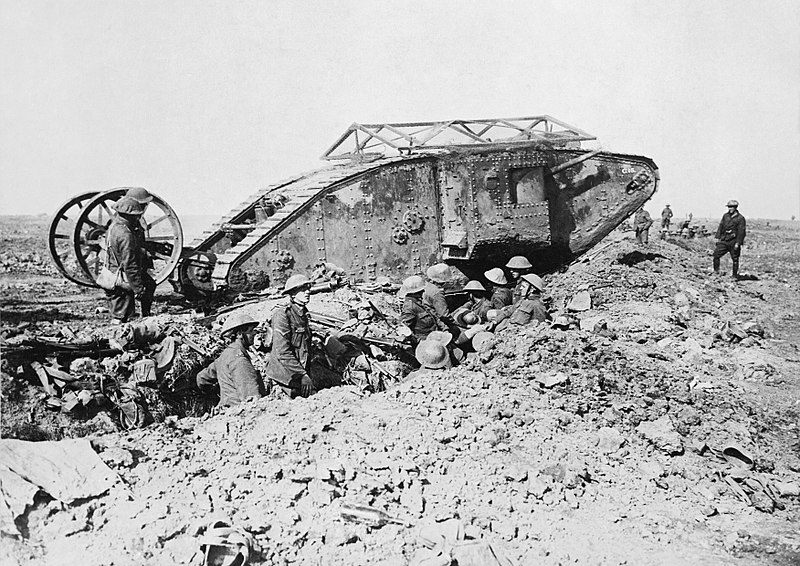
World War I, also known as the Great War, was a global conflict primarily centered in Europe. The war originated from a complex web of alliances and tensions among major powers.
The assassination of Archduke Franz Ferdinand of Austria-Hungary in June 1914 triggered a series of events that led to the outbreak of war.
The conflict involved the Allied Powers (including France, the British Empire, Russia, and later the United States) against the Central Powers (including Germany, Austria-Hungary, and the Ottoman Empire).
The war witnessed significant trench warfare, new technologies such as tanks and airplanes, and devastating casualties. It ended with the signing of the Armistice of Compiègne in 1918, leading to the redrawing of national borders and the collapse of several empires.
4. Russian Civil War (1918-1922)
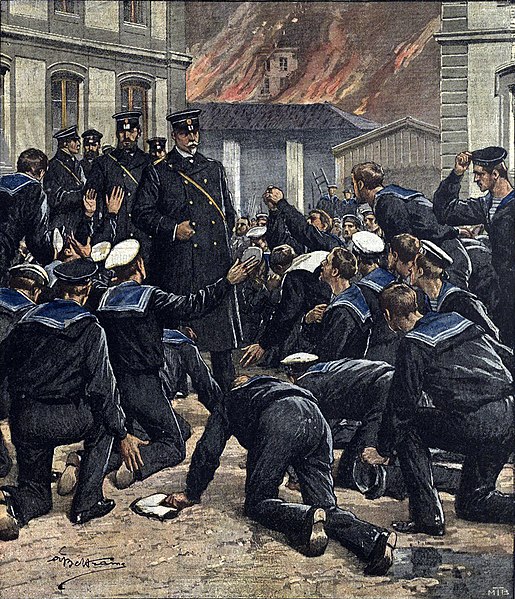
The Russian Civil War was fought in the aftermath of the Russian Revolution, primarily between the Bolshevik Red Army and various anti-Bolshevik forces known as the White Army.
The conflict emerged as different factions sought to establish their control over the former Russian Empire. The Whites, comprising diverse groups ranging from monarchists to socialists, aimed to overthrow the Bolshevik government.
The war witnessed widespread violence, foreign interventions, and the rise of warlords. Eventually, the Red Army, led by the Bolsheviks under Vladimir Lenin and Leon Trotsky, emerged victorious. The war resulted in the establishment of the Soviet Union in 1922.
5. Turkish War of Independence (1919-1922)

The Turkish War of Independence was fought between the Turkish nationalists, led by Mustafa Kemal Atatürk, and various Allied powers, including Greece, Britain, France, and Italy, who sought to divide the defeated Ottoman Empire.
The war was a response to the partitioning and occupation of Turkish territories by the Allies after World War I. Under Atatürk’s leadership, Turkish forces launched a successful resistance movement and expelled the occupying forces.
The war culminated in the signing of the Treaty of Lausanne in 1923, which recognized the modern Republic of Turkey and its sovereignty.
6. Irish War of Independence (1919-1921)

The Irish War of Independence was a conflict between Irish nationalists, represented by the Irish Republican Army (IRA), and the British government.
The war arose from the desire of Irish nationalists to establish an independent Irish Republic, separate from British rule. The IRA carried out guerrilla warfare tactics, including ambushes and assassinations, against British forces and institutions in Ireland.
The conflict led to the signing of the Anglo-Irish Treaty in 1921, which established the Irish Free State as a self-governing dominion within the British Empire.
7. Greco-Turkish War (1919-1922)

The Greco-Turkish War, also known as the Asia Minor Campaign, was fought between Greece and the nationalist forces of the Turkish War of Independence.
The conflict emerged from territorial disputes and the Greek desire to expand its influence into Anatolia. Initially, Greek forces made advances but faced strong resistance from Turkish nationalists led by Mustafa Kemal Atatürk.
The war culminated in a decisive Turkish victory, resulting in the expulsion of Greek forces from Anatolia. The conflict led to a population exchange between Greece and Turkey and further solidified the establishment of the Republic of Turkey.
8. Polish-Soviet War (1919-1921)

The Polish-Soviet War was a conflict between Poland and Soviet Russia, arising from territorial disputes and conflicting ideologies. The war witnessed several major offensives and counteroffensives.
The Polish forces, under the leadership of Józef Piłsudski, managed to repel the Soviet invasion and launch a counteroffensive into Ukraine and Belarus.
The war ended with the signing of the Peace of Riga in 1921, which recognized the independence of Poland and defined the Soviet-Polish border.
The war was significant as it halted the Soviet advance into Europe and shaped the post-World War I borders in Eastern Europe.
9. Chinese Civil War (1927-1949)

The Chinese Civil War was a prolonged conflict between the Chinese Communist Party (CCP) and the Chinese Nationalist Party (Kuomintang, or KMT).
The war began in 1927, after the Northern Expedition, a joint campaign against warlords, when the KMT turned against the CCP.
The conflict witnessed various phases and periods of collaboration and confrontation, including the Second Sino-Japanese War (1937-1945) when both sides fought against Japanese invaders.
However, as World War II came to an end, the civil war resumed. The CCP, under the leadership of Mao Zedong, eventually emerged victorious in 1949, establishing the People’s Republic of China. The defeated KMT retreated to Taiwan, where they established the Republic of China.
10. Chaco War (1932-1935)
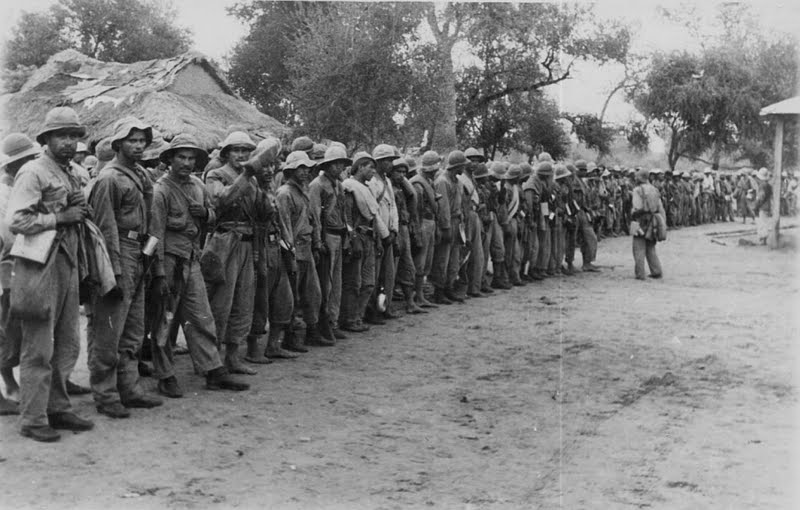
The Chaco War was fought between Bolivia and Paraguay over the Chaco Boreal region, an area rich in oil and gas resources. The conflict arose from longstanding territorial disputes between the two countries.
It was characterized by harsh desert conditions, trench warfare, and significant casualties. Both sides struggled to gain an advantage, but Paraguay eventually gained the upper hand with better strategic coordination and support from various foreign powers.
The war ended with the signing of the Treaty of Asunción in 1935, which granted the majority of the disputed territory to Paraguay.
11. Second Italo-Ethiopian War (1935-1936)
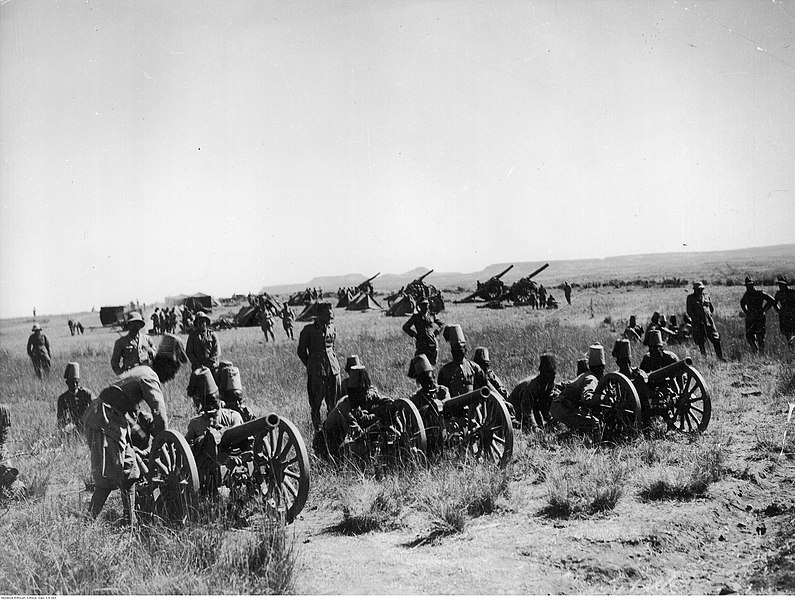
The Second Italo-Ethiopian War was a conflict between the Kingdom of Italy, led by Benito Mussolini, and the Ethiopian Empire (Abyssinia), under Emperor Haile Selassie.
Italy sought to expand its colonial holdings in East Africa and avenge its previous defeat in the First Italo-Ethiopian War (1895-1896). The war witnessed the use of modern weapons by Italy, including aerial bombardment and chemical weapons, against Ethiopian forces.
Despite Ethiopia’s resistance and appeals for international support, Italy emerged victorious and annexed Ethiopia into Italian East Africa in 1936.
12. Spanish Civil War (1936-1939)
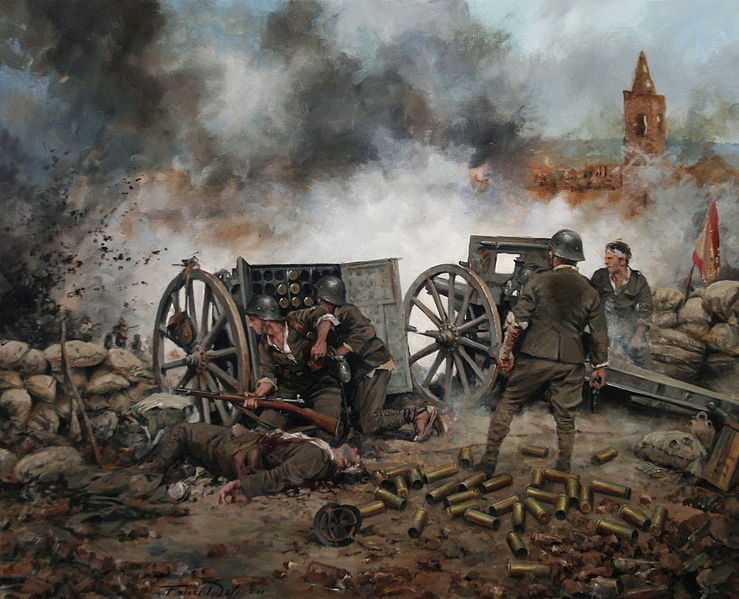
The Spanish Civil War was a conflict fought between the democratically elected Spanish Republican government, supported by leftist factions, and the Nationalist forces, led by General Francisco Franco and supported by fascist groups.
The war originated from political and social divisions within Spain, as well as international influences. The conflict witnessed significant foreign involvement, with Nazi Germany and Fascist Italy supporting the Nationalists, while the Soviet Union and International Brigades supported the Republicans.
The Nationalists eventually prevailed, and Franco established a dictatorship that lasted until his death in 1975. The war served as a precursor to World War II, with various nations testing military strategies and weapons in Spain.
13. Second Sino-Japanese War (1937-1945)
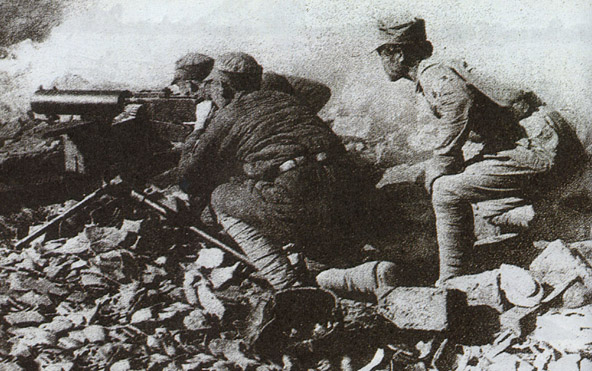
The Second Sino-Japanese War was a major conflict fought between the Republic of China (led by the Kuomintang) and the Empire of Japan.
The war began with the Marco Polo Bridge Incident in 1937, when Japanese forces invaded China. The conflict quickly escalated into a full-scale war, with Japan seeking to expand its influence and control over China.
The war witnessed numerous battles, such as the Battle of Shanghai and the infamous Nanjing Massacre, resulting in significant civilian casualties. The Chinese resistance was led by the Kuomintang forces under Chiang Kai-shek, as well as the communist forces under Mao Zedong.
The war merged with World War II when Japan attacked Pearl Harbor in 1941. It ended in 1945 with Japan’s surrender, after the atomic bombings of Hiroshima and Nagasaki.
14. World War II (1939-1945)

World War II was a global conflict involving many nations and fought primarily in Europe, Asia, Africa, and the Pacific. The war began with Germany’s invasion of Poland in 1939, prompting Britain and France to declare war on Germany.
The conflict witnessed the Axis Powers, led by Germany, Italy, and Japan, against the Allied Powers, including Britain, the Soviet Union, the United States, and China, among others.
It was marked by large-scale military operations, atrocities, and the Holocaust, resulting in tens of millions of civilian and military casualties.
The war ended in 1945 with the unconditional surrender of the Axis Powers, following the atomic bombings of Hiroshima and Nagasaki, as well as the Soviet Union’s invasion of Manchuria.
15. Korean War (1950-1953)

The Korean War was a conflict fought between North Korea, supported by the Soviet Union and China, and South Korea, supported by a United Nations coalition led by the United States.
The war began in 1950 when North Korea invaded South Korea, aiming to reunify the peninsula under communist rule. The conflict witnessed significant back-and-forth fighting and the involvement of major world powers.
The war also saw the first large-scale combat between jet-powered aircraft. The war ended in 1953 with an armistice agreement, which established a demilitarized zone along the 38th parallel and maintained the division of Korea into North and South.
16. First Indochina War (1946-1954)
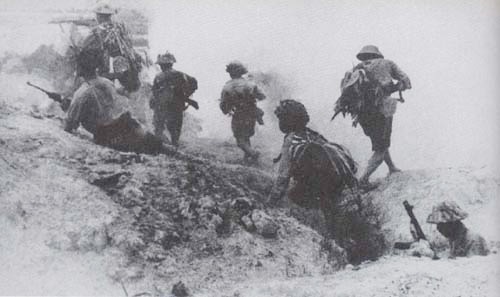
The First Indochina War was fought between French forces and the communist Viet Minh movement, led by Ho Chi Minh, in their struggle for Vietnamese independence.
The war emerged after World War II, when the French sought to reestablish control over their former colony of Vietnam. The conflict witnessed guerrilla warfare, jungle fighting, and the use of various tactics by the Viet Minh, including the Battle of Dien Bien Phu in 1954.
The Viet Minh eventually achieved victory, leading to the signing of the Geneva Accords, which temporarily partitioned Vietnam along the 17th parallel and established the independent countries of North Vietnam and South Vietnam.
17. Algerian War of Independence (1954-1962)

The Algerian War of Independence was a conflict between the National Liberation Front (FLN) and the French colonial forces. The war arose from Algeria’s desire to end French colonial rule and gain independence.
The FLN waged a guerrilla war against French forces, employing tactics such as bombings, assassinations, and rural insurgency. The war witnessed significant violence and atrocities on both sides.
As the conflict intensified, France faced international pressure, and domestic unrest led to political changes. Eventually, negotiations led to the signing of the Evian Accords in 1962, which granted Algeria independence.
18. Suez Crisis (1956)

The Suez Crisis was a military conflict involving Egypt, Israel, France, and Britain. The crisis began when Egyptian President Gamal Abdel Nasser nationalized the Suez Canal, previously under joint British-French control.
In response, Israel launched an invasion of Egypt, followed by a joint military operation by British and French forces.
However, international pressure, particularly from the United States and the Soviet Union, forced a ceasefire and the withdrawal of foreign forces.
The Suez Crisis marked a significant shift in the balance of power, signaling the decline of British and French colonial influence in the region.
19. Cuban Revolution (1953-1959)

The Cuban Revolution was a prolonged struggle led by Fidel Castro and the 26th of July Movement against the regime of Cuban dictator Fulgencio Batista.
It began with the failed attack on the Moncada Barracks in 1953 and continued through a period of guerrilla warfare in the Sierra Maestra mountains. The revolutionary forces gradually gained support from the Cuban population and successfully overthrew Batista’s government in 1959.
The revolution led to the establishment of a socialist state in Cuba under Castro’s leadership, with significant implications for Cuban domestic politics and international relations, particularly with the United States.
20. Bay of Pigs Invasion (1961)
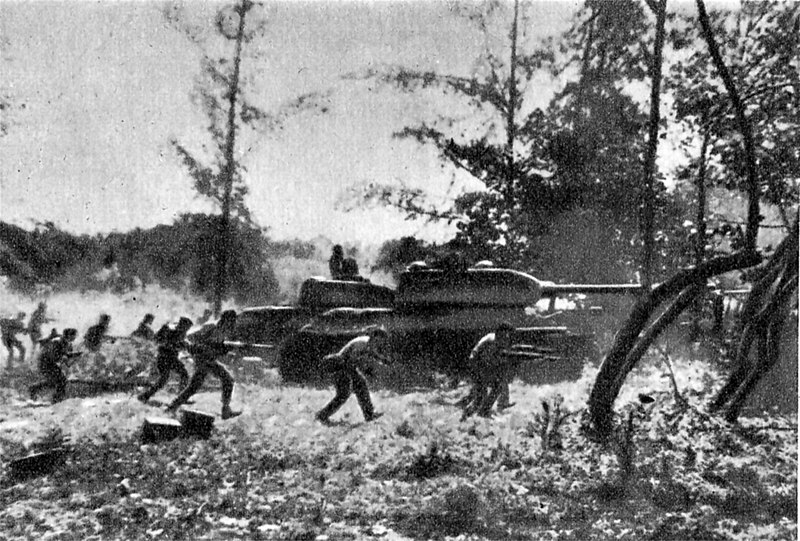
The Bay of Pigs invasion was a failed military operation by the Central Intelligence Agency (CIA) and Cuban exiles to overthrow the Cuban government led by Fidel Castro.
The invasion was carried out in April 1961 when a force of around 1,500 Cuban exiles, trained and supported by the CIA, landed at the Bay of Pigs in Cuba. However, the invasion faced strong resistance from Cuban forces, and the operation failed to garner popular support or achieve its objectives.
The Bay of Pigs invasion marked a significant embarrassment for the United States and further strained relations between Cuba and the U.S.
21. Vietnam War (1955-1975)
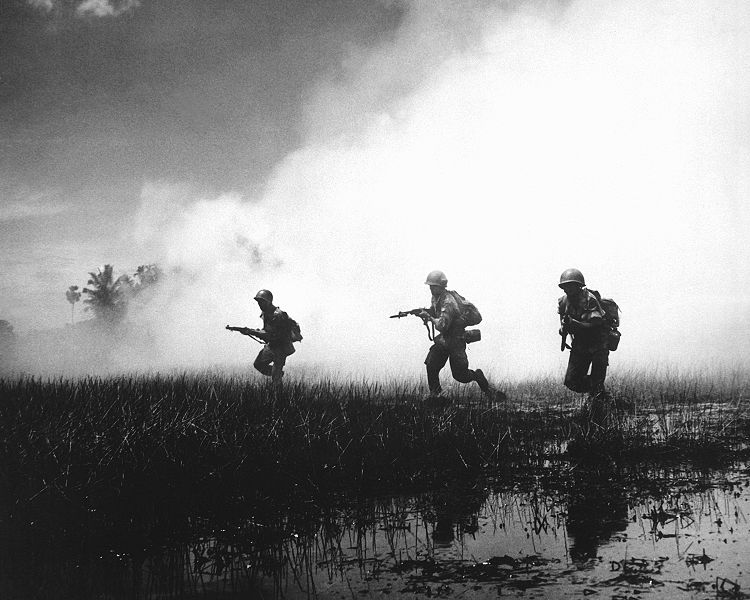
The Vietnam War, also known as the Second Indochina War, was a protracted conflict fought between North Vietnam, supported by communist allies such as the Soviet Union and China, and South Vietnam, backed by the United States and its anti-communist allies.
The war began in the late 1950s, following the division of Vietnam after the Geneva Accords in 1954. The conflict witnessed large-scale conventional warfare, guerrilla tactics, and a massive U.S. military presence. The war was highly controversial and faced opposition both domestically and internationally.
In 1973, the Paris Peace Accords were signed, leading to the withdrawal of U.S. forces. The war officially ended in 1975 when North Vietnamese forces captured Saigon, the capital of South Vietnam, and reunified the country under communist rule.
22. Six-Day War (1967)
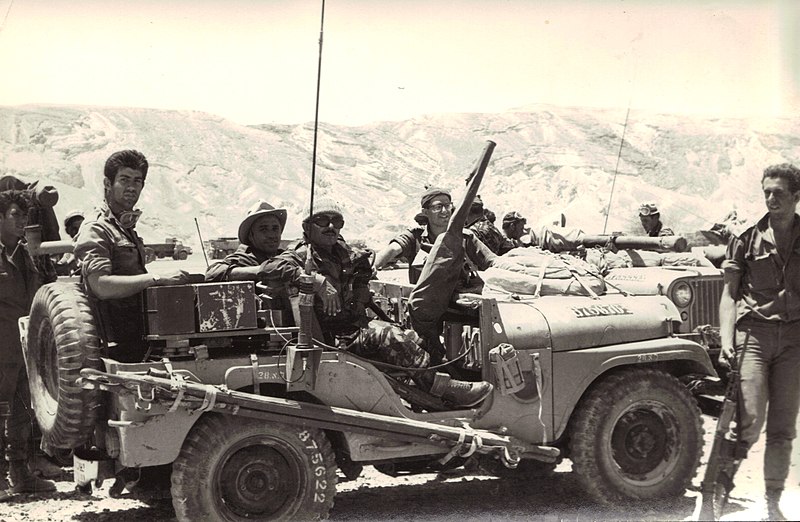
The Six-Day War was a brief but significant conflict fought between Israel and a coalition of Arab states, including Egypt, Jordan, and Syria. The war began on June 5, 1967, when Israel launched a preemptive strike against Egyptian airfields.
The conflict witnessed intense aerial and ground battles, resulting in Israel’s swift capture of the Sinai Peninsula, Gaza Strip, West Bank, and the Golan Heights. The war reshaped the political landscape of the Middle East, with Israel gaining control over territories previously held by Arab nations.
The Six-Day War had far-reaching implications for future conflicts in the region and contributed to ongoing tensions between Israel and its neighbors.
23. Yom Kippur War (1973)
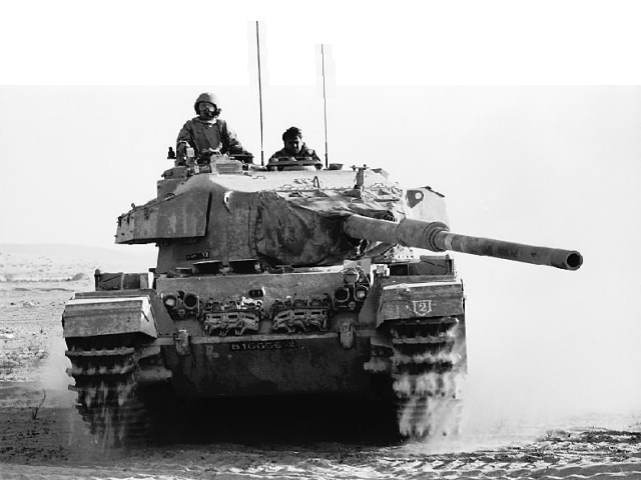
The Yom Kippur War, also known as the October War, was a conflict fought between Israel and a coalition of Arab states led by Egypt and Syria.
The war began on October 6, 1973, during the Jewish holy day of Yom Kippur, with coordinated surprise attacks by Egyptian and Syrian forces on Israeli positions in the Sinai Peninsula and the Golan Heights.
The initial Arab advances were partially successful, but Israel quickly mobilized its forces and counterattacked.
The war resulted in heavy casualties on both sides and witnessed significant tank battles and air combat. A ceasefire was eventually achieved, but the war led to diplomatic and political shifts in the region, particularly with regards to Egypt’s pursuit of peace negotiations with Israel.
24. Soviet-Afghan War (1979-1989)
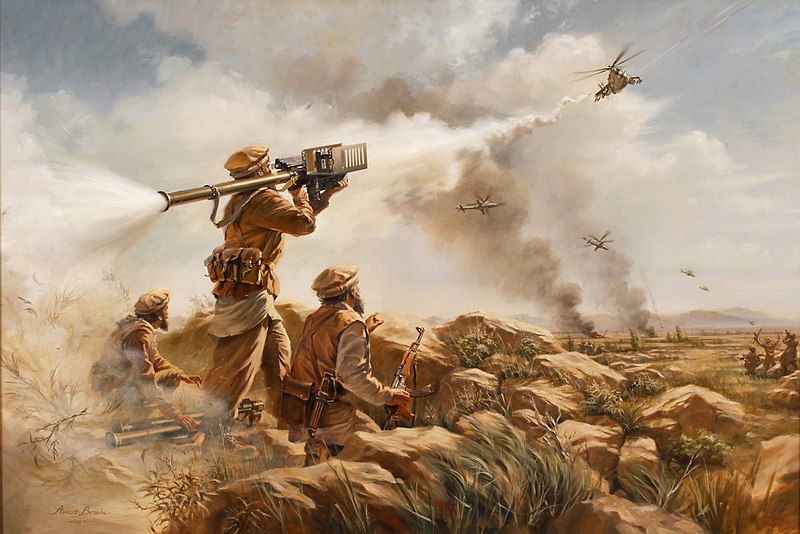
The Soviet-Afghan War was a conflict between Soviet forces and the Afghan Mujahideen resistance, backed by various international actors.
The war began in December 1979 when Soviet troops invaded Afghanistan to support a pro-Soviet government facing an insurgency. The Mujahideen, a coalition of Afghan rebel groups, waged a guerrilla war against the Soviet occupation forces.
The war witnessed significant battles and human rights abuses, including widespread use of landmines and aerial bombardments. The conflict lasted nearly a decade and resulted in a heavy toll on both sides.
The Soviet Union eventually withdrew its forces in 1989, marking a significant defeat and contributing to the unraveling of the Soviet empire.
25. Falklands War (1982)
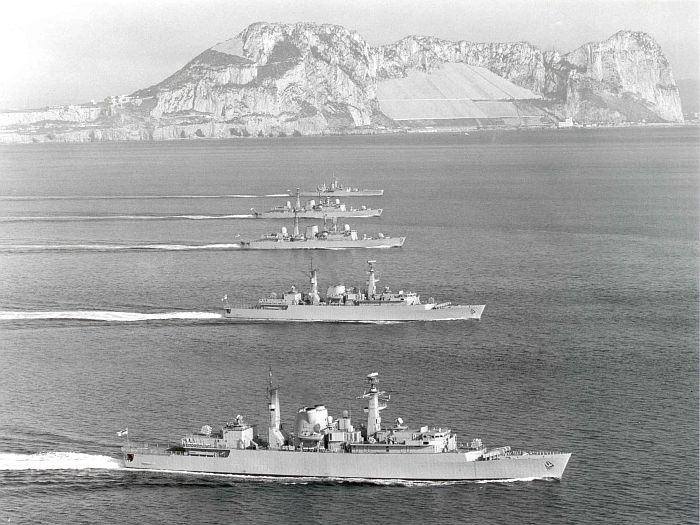
The Falklands War was a conflict fought between Argentina and the United Kingdom over the sovereignty of the Falkland Islands, a British overseas territory in the South Atlantic.
The war began on April 2, 1982, when Argentine forces invaded and occupied the Falkland Islands and South Georgia. The United Kingdom, under Prime Minister Margaret Thatcher, dispatched a naval task force to retake the islands.
The conflict witnessed naval engagements, air strikes, amphibious landings, and ground combat. After intense fighting, the British forces successfully recaptured the islands by June 14, 1982.
The Falklands War resulted in a significant loss of life and had political ramifications both domestically and internationally, particularly in Argentina.
26. Iran-Iraq War (1980-1988)
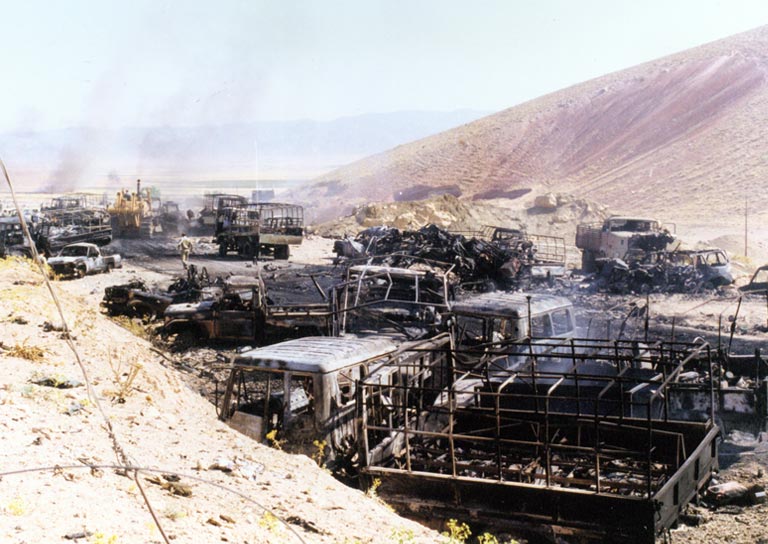
The Iran-Iraq War was a protracted conflict fought between Iran and Iraq. The war began on September 22, 1980, when Iraq, under the regime of Saddam Hussein, invaded Iran.
The war stemmed from territorial disputes, border conflicts, and ideological differences between the two nations. The conflict witnessed trench warfare, chemical weapons attacks, and extensive air and missile strikes. The war resulted in a high number of casualties and significant economic damage to both countries.
Despite numerous ceasefire attempts, the war continued for eight years until a UN-brokered ceasefire was finally implemented in 1988. The war had profound regional implications and contributed to the destabilization of the Middle East.
27. Gulf War (1990-1991)
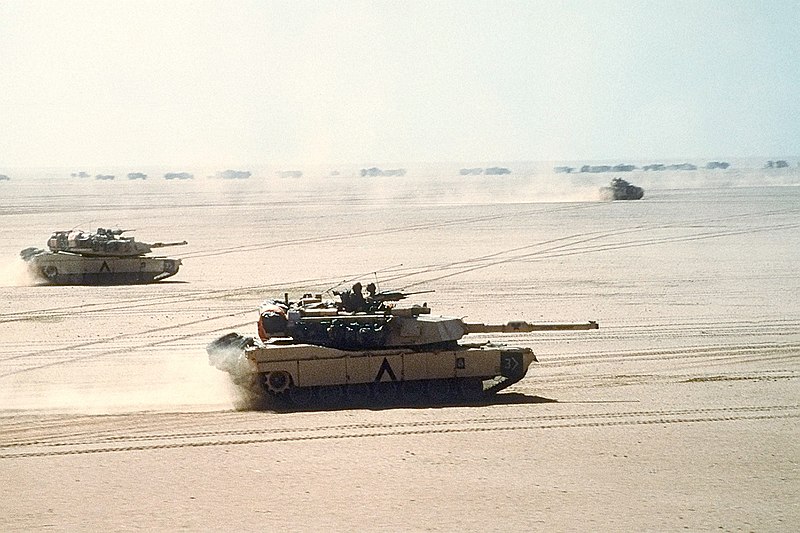
The Gulf War, also known as the First Gulf War or Operation Desert Storm, was a conflict between Iraq and a coalition of forces led by the United States and supported by several countries.
The war began on August 2, 1990, when Iraq, under Saddam Hussein, invaded Kuwait, citing territorial claims and economic disputes.
The international community, led by the United Nations, condemned the invasion and imposed economic sanctions on Iraq. A coalition force, authorized by the UN, launched a military operation in January 1991 to liberate Kuwait. The war witnessed extensive aerial bombardments, ground offensives, and the use of advanced military technologies.
The coalition forces achieved swift victory, pushing Iraqi forces out of Kuwait. However, the war ended without removing Saddam Hussein from power in Iraq, leading to ongoing conflicts in the region.
28. Yugoslav Wars (1991-2001)

The Yugoslav Wars were a series of interconnected conflicts that emerged with the breakup of Yugoslavia in the early 1990s. The conflicts primarily involved ethnic and nationalist tensions among various republics and ethnic groups.
The wars included the Croatian War of Independence (1991-1995), the Bosnian War (1992-1995), and the Kosovo War (1998-1999). The conflicts witnessed widespread violence, ethnic cleansing, and war crimes.
The international community, through the United Nations and NATO, intervened in various stages to mediate and enforce peace.
The wars resulted in significant loss of life, displacement of populations, and the redrawing of national borders. The conflicts in the former Yugoslavia marked some of the most devastating and complex conflicts in Europe since World War II.
